The Maharani’s Mercenaries and Family Disputes in the House of Jaipur
Behind the facade of Rambagh Palace balls, of garden parties with visiting celebrities at Lily Pool and the feigned acceptance of the inevitability of royalty in retreat, not all was right in the House of Jaipur. The warm bond between Ayesha and Bubbles had gone. ‘You never meet them at each other’s homes in Jaipur, though each is always curious to know if you have seen the other,’ noted Anne Morrow. While attending a high-society Jaipur wedding, Elisabeth Bumiller found out why. ‘The gossip of the hour is about a bitter lawsuit over an estate worth an estimated Rs 100 crore that is pitting Ayesha, Jagat and his half-brothers Pat and Joey against Bubbles and his wife Padmini [Devi].’
At the heart of the quarrel was whether Jai’s estate belonged to the whole family or to Bubbles alone. Family custom and the principle of primogeniture dictated that as the eldest son he should be the sole inheritor, insisted Bubbles. But under the Hindu Undivided Family (HUF) Act, all of Jai’s offspring had the right to an equal share of his fortune. ‘It’s only he who is creating this problem,’ Ayesha told Bumiller, referring to Bubbles. Admitting that the situation was ‘sad’, her stepson countered: ‘It’s not like I have everything and the rest of them are out on the street.’ Nor did he think the family quarrel was historically cataclysmic. ‘This is very much part of the old tradition. The family fights used to be much worse than they are today.’ At this point Bubbles’s wife, Padmini Devi, who had been listening to the conversation, interrupted: ‘The estate doesn’t belong to anybody else. It’s very simple. Let the court decide.’
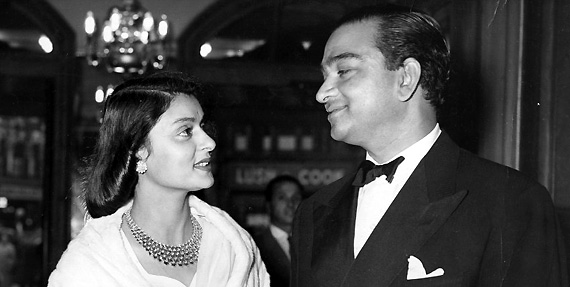
Gayatri Devi and Sawai Man Singh II of Jaipur, known to their friends as Ayesha
and Jai. She was his third wife. Photo: Wikimedia Commons, Public domain
Most veteran Jaipur watchers trace the evolution from royal love-in to litigation to Jai’s death. ‘[Ayesha] had such charm for the boys: Joey, Pat and Bubbles. They all loved her. Then Jagat was there. It was a very close family,’ says Anne Wright. ‘When Jai was alive he completely controlled her and them, so everybody got on. The moment he died, the whole thing splintered.’
While the Jai factor played a role, it does not account for why it took almost a decade and a half for the tension to boil over. Media reports at the time pointed to the deterioration in relations between Ayesha and Padmini as being the root cause of the conflict. The classic mother-in-law versus daughter-in-law ‘saas-bahu’ skirmishing that had been simmering for years suddenly took on palatial proportions. Like Donegild in Chaucer’s The Man of Law’s Tale, Ayesha was being blamed for wanting to split up her stepson’s marriage, something that seemed incongruous given that she was responsible for them tying the knot in the first place. What she hadn’t anticipated was Jai’s premature death that would turn the tables on who was the House of Jaipur’s leading lady.
Bubbles was thirty-four when he finally married Padmini on 10 March 1966. A close relative of the family remembers Jai’s frustration at his eldest son’s inability to settle down. ‘He’d been through so many women he wanted to marry, he didn’t want to marry. [Man Singh] and Gayatri Devi would not have objected if he had chosen some girl who was socially acceptable.’ Potential partners for Bubbles included Harshad Kumari, the daughter of the Jam Saheb of Jamnagar, Digvijaysingh Ranjitsinghji Jadeja, and Usha Devi of Gwalior, the daughter of Maharaja Jivajirao Scindia. But according to a member of a Maratha princely family who watched the drama being played out, Ayesha objected to a union with either state for fear of being overshadowed. ‘If there was going to be any competition, she wanted to have the upper hand.’
Padmini’s father, Maharaja Rajendra Prakash, was the ruler of the small Himalayan kingdom of Sirmaur, not the kind of state that normally supplied marriage partners for Jaipur royals. What clinched the union was his close friendship with Bhaiya. It probably helped, also, that Padmini was an exquisite beauty, described by one admirer as ‘straight out of a fine Pahari miniature painting’. ‘I don’t know how much thought [Bubbles] gave to this. But he must have, otherwise he wouldn’t have married [Padmini],’ the close relative says.
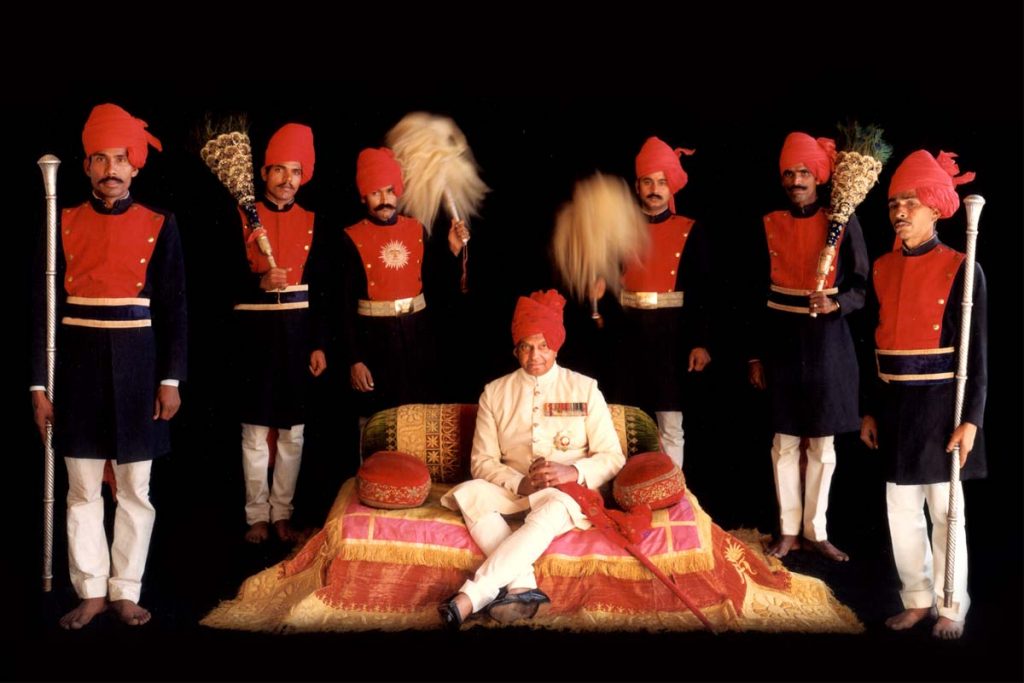
Bhawani Singh, the last titular ruler of Jaipur. Photo: royaljaipur.in via Jaipur Royal Family
Initially, Padmini and Ayesha bonded well. ‘She took her to London and got her educated in etiquette and so on. Because she was from Sirmaur, a very small state, she didn’t have that finesse. She didn’t have a chance to mingle,’ says the relative. ‘Padmini’s social graces were not as good as Jaipur’s.’ Following the marriage, relations between the two women soured. ‘Somewhere, something went wrong. Maybe they were both vying for Bubbles’s attention.’ From Ayesha’s perspective, says Aman Nath, it came down to the fact that ‘[Ayesha] hated the idea that Padmini could do anything better than her’. With Jai’s death, she was now the dowager, and Padmini, from a tiny Himalayan state most people had never heard of, was the maharani. Playing second fiddle was not in Ayesha’s nature. Nor, as it turned out, was it in Padmini’s. Moreover, unlike Ayesha, Padmini had an impeccable Rajput pedigree. ‘Ayesha, who had hobnobbed in politics with Rajmata Gwalior, quite fancied that title which sounded closer to the Queen Mother tradition of England than a cloistered dowager in the zenana,’ explains Nath, who recalls Bubbles once exclaiming: ‘She is no Rajmata, certainly not the mother of the ruler!’
Also Read: In ‘Rajputana’, Electoral Contests are Still Being Fought on Medieval Battlefields
The closest Padmini has come to revealing the tensions between the two came much later. In March 2009, she appeared on The First Ladies, an NDTV chat show where the designer duo Abu Jani and Sandeep Khosla tickled the egos of celebrity wives with mostly innocent questions about their tastes in decor and what their husbands liked to eat for dinner. When Khosla dared to point out to Padmini that she was the ‘least-known queen of Jaipur’ and asked: ‘Is it intentional?’, his clearly indignant interviewee responded: ‘Least-known queen means what? As in my mother-in-law?’ She regained her poise after Khosla corrected himself by saying Padmini was in fact the queen and Ayesha was the rajmata. Padmini then politely explained that she had been taught from the time she was a child that the first seat was always ‘given to the elders’.
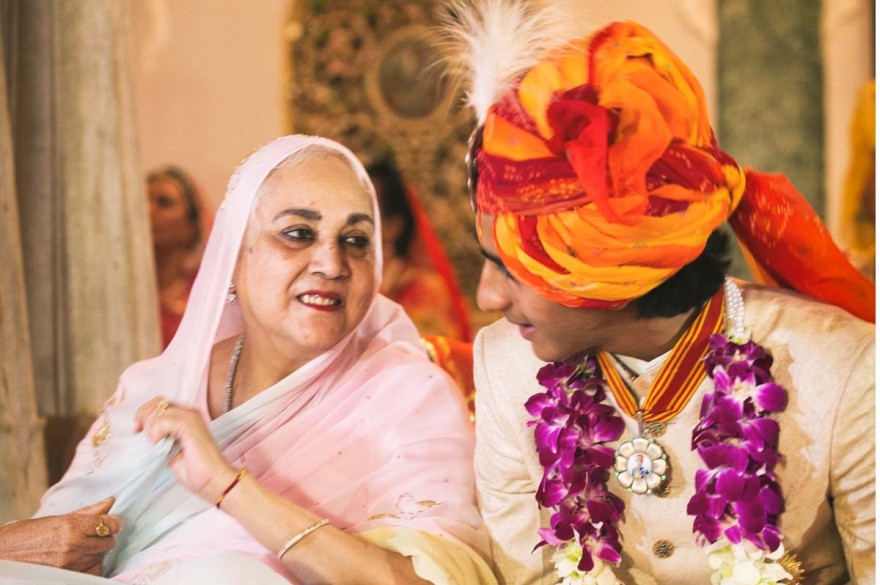
Padmini Devi. Photo: royaljaipur.in via Jaipur Royal Family
After being married to Bubbles for just a few years, Padmini began to spend more time in New Delhi, prompting speculation that the couple were separating. But in 1983, she returned to Jaipur, bringing with her two of her most trusted advisers from Sirmaur, Amarendra Jit Singh Paul and Prabhu Jyoti Singh Paul. For all her lack of Westernized sophistication, Padmini would turn out to be a woman of steely determination, relentless in fighting for the rights of her husband, her daughter and her grandchildren. And once she was back in Jaipur, she took the reins firmly in her own hands. ‘It was as if she wanted the world to know that she too came from a martial family,’ says Aman Nath.
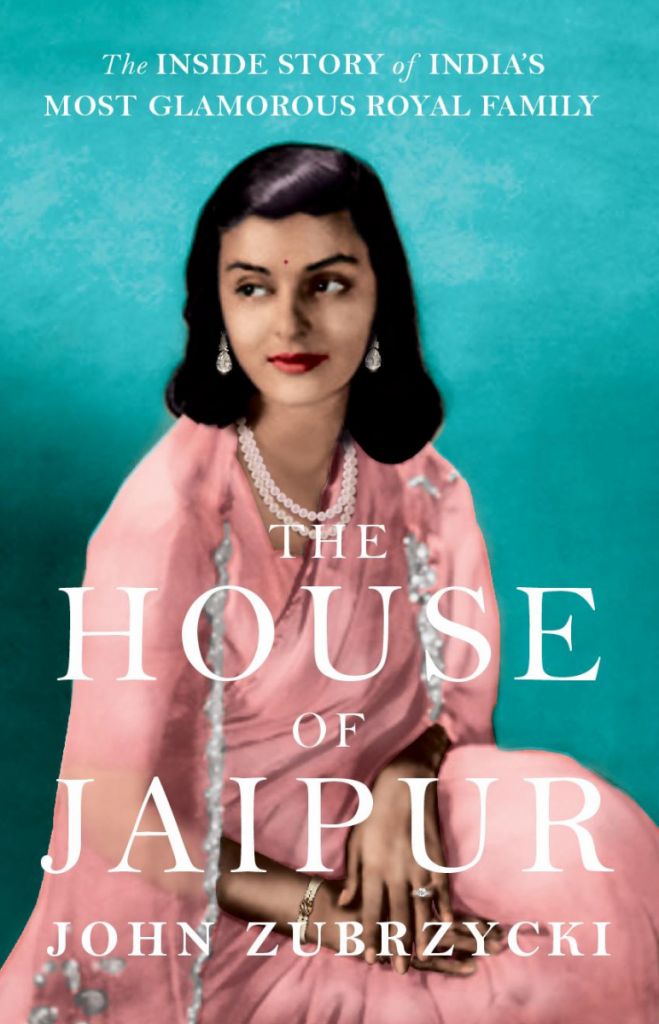
John Zubrzycki
House of Jaipur - The Inside Story of India’s Most Glamorous Royal Family
Juggernaut (August 2020)
Padmini’s first priority was to overhaul the management of the City Palace. ‘She told Bubbles: “You’ve messed it up. Now I want my people, not your people, to run it,”’ recalls the Jaipur correspondent of the Times of India, Prakash Bhandari. ‘For the locals, the so-called faithfuls, it was a palace rebellion.’ The Paul brothers quickly made themselves at home, even setting up a mini gurdwara in one of the palace’s vacant offices. All financial and legal affairs came under their supervision. One person who watched their takeover described them as ‘the Maharani’s mercenaries. She had to assert herself and they were her means to do it.’
Now that Ayesha and Padmini were living just a few kilometres apart, strains reappeared. Matters came to a head in late August 1985 when Bubbles gave his wife a general power of attorney with regard to all properties and then left on an overseas trip. ‘Since relations between the Rajmata and Padmini Devi were far from cordial, Bhawani Singh’s actions aroused Gayatri Devi’s ire,’ wrote Inder Sawhney in the Illustrated Weekly of India, adding that Ayesha felt that the Paul brothers would now start exerting too much influence over palace affairs.
Others put the ruckus down to Bubbles and Padmini beginning to look to the future. They had a daughter, Diya, but no son, raising the possibility of the estate going to Diya and her future husband – a man who might have no connection to Jaipur. Now that princely titles had been abolished, they were faced with the reality that there would never be another formally recognized Maharaja of Jaipur or even a suitable head of the Rajawat clan. Although Indian law allowed a daughter to inherit an estate, this was anathema to people who still lived by the traditions of a royal court. Bubbles had also recently suffered a heart attack. This had changed his entire perception of life, he later told Ritu Sarin of the news weekly Sunday. ‘I suddenly realized I had to safeguard the legal rights of my wife and daughter.’
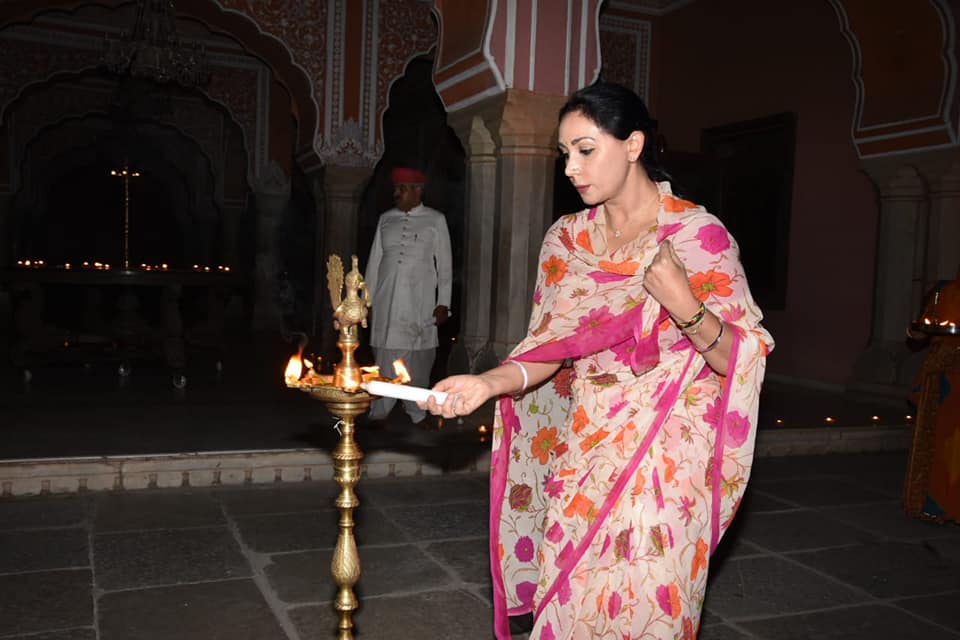
Diya Kumari lighting a lamp. Photo: Facebook/diyakumari
What had been a largely private tussle now went public. Granting Padmini power of attorney ‘infuriated the other Jaipurs, who say Bubbles has been regally henpecked by his greedy wife’, wrote Bumiller. Padmini dismissed the charge as ‘mischievous gossip’. Regardless of who had henpecked whom, Ayesha and Jagat published a notice in local newspapers stating that any transactions conducted by the Paul brothers regarding palace properties would not be valid and they would not be held responsible in any manner. Two months later, on 31 October 1985, Padmini wrote to the administrator of the Jaipur Municipal Corporation complaining that bogus pattas, or deeds, were being issued by ‘unauthorised persons’ for land owned by her husband – an underhand swipe at the rest of the family.
Exclusive excerpts from House of Jaipur - The Inside Story of India’s Most Glamorous Royal Family, by John Zubrzycki, by arrangement with the publisher Juggernaut
John Zubrzycki is an award-winning journalist and acclaimed author specialising in South Asia. He is the best-selling author of The Last Nizam: An Indian Prince in the Australian Outback and The Mysterious Mr Jacob: Diamond Merchant, Magician and Spy.
This article went live on August seventeenth, two thousand twenty, at thirty minutes past two in the afternoon.The Wire is now on WhatsApp. Follow our channel for sharp analysis and opinions on the latest developments.




